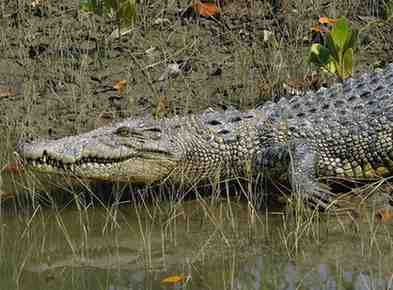
A recent 2025 census held by the forest department have recorded a spurt in the count of estuarine crocodiles in the SBR, including some really heartwarming numbers of hatchlings— a rarity and good news value in the changed mangrove dynamics.
Population Overview
- The estimated population has increased to 220-242 animals, with the 2024 estimate being 204-234.
- There were 213 crocodiles directly observed, including:
- 125 adults
- 88 juveniles
- 23 hatchlings (a big increase from the 2 hatchlings observed in 2024)
The survey found one crocodile per 5.5 km of creek.
Survey Method
The study includes1,168 km striate of creeks (i.e. 64% of water canals of SBR), where:
- Systematic visual surveys
- GPS mapping
- Detailed habitat analysis
Habitat and Conservation Challenges
Crocodiles favor narrower creeks (high-tide width <180 m) and can endure seasonal salinity variation. But increased salinity from climate change is a long-term threat to their environment.
Ecological Importance
As top predators, saltwater crocodiles contribute to the health of ecosystems by scavenging carcasses and controlling populations of some aquatic species.
Conservation Success
Long term work in West Bengal, such as the Bhagabatpur Crocodile Project (begun 1976) which has reintroduced *577 crocodiles* into the wild, has contributed to this success. Conservation programs in Odisha have also helped.
Looking Ahead
Population growth is promising but, as salinity is driven by climate, the loss of habitat, the rising of salinity will continue to require careful monitoring program and adaptive conservation action if we are to ensure the species enjoys a long-term future in the Sundarbans.
Month: Current Affairs - August 21, 2025
Category: current affairs daily